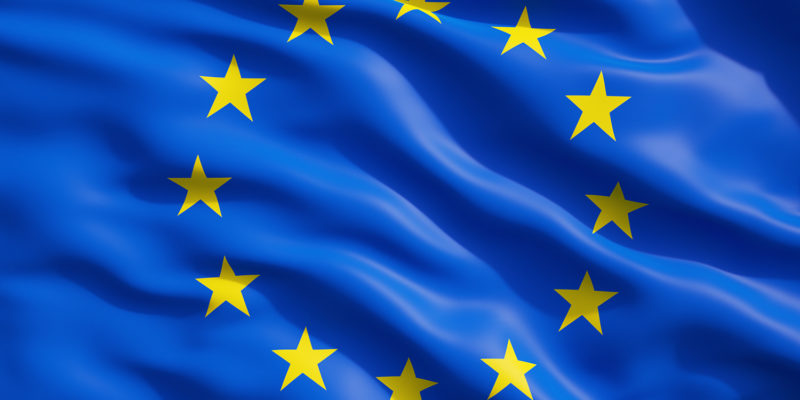Executive One-on-One: A Look Ahead for the European Chemicals Market
Executives from the European Chemical Industry Council (Cefic), which represents chemical manufacturers in Europe, provide perspectives on key issues: rising energy, production, and transportation costs and the EU’s Green Deal.
Key trends in the European chemicals market
Rising costs for energy, raw materials, production, and transportation was a persistent theme in 2022 for the European chemicals market, so how is 2023 thus far shaping up?
“While declining energy costs provide a short relief, we observe high levels of stocks of finished chemicals products and a drop in chemicals demand,” said the European Chemical Industry Council (Cefic) n its first Chemical Trends Report of 2023. Key findings from Cefic are outlined below.
Economic Sentiment Indicator: in December 2022, the Economic Sentiment Indicator, a measure of business confidence, rose for the second time in both the 27 member states of the European Union (EU) and the euro area despite declining global industrial production.
As high inflation and interest rates put downward pressure on economic growth, the latest data on global industrial production show a contraction in the major economies across the world although some uptick in Europe. In November 2022, the global manufacturing Purchasing Managers’ Index deteriorated further, decreasing from 49.4 to 48.8. However, the latest data on the Purchasing Managers’ Index for the euro area showed a third straight month of improvement in manufacturing, with the January 2023 reading rising a full point to 48.8. While that is still under 50, the dividing line between expansion and contraction, the index in manufacturing in Europe has inched higher for three straight months, in part showing increased confidence and lessening concerns of a recession.
Chemicals business confidence: The chemical industry’s confidence picked up slightly in December 2022, the second time since February 2022, driven by a strong uplift in the production expectations of chemical managers. However, this was partly offset by a further slight deterioration in managers’ assessments of the current level of overall order books and piling up of stocks of finished products.
Stocks of finished chemical products: The level of stocks of chemical products increased throughout the first 10 months of 2022. The level of stocked finished chemical products is close to the record levels recorded during the COVID-19 pandemic.
The level of stocks of the EU-27 (referring to the 27 member states of the EU) in the chemicals sector is perceived by chemicals managers as too high compared to normal levels. Data on managers’ assessments of stocks of finished chemicals products indicate a second wave of increasing stockpiles during the last 10 months of 2022. The chemicals output in November 2022 was 12% below the level reported in March 2022. A similar trend is observed on the trade side.
The EU27 external trade environment for chemicals experienced a rapid loss of momentum between March and September 2022, according to Cefic’s analysis. The European recession and the weak development of China were the two key drivers behind the negative trend of exports and imports (in volume terms). The latest data available on chemical trade (January to October 2022) on a value basis in the EU still showed a trade deficit of about EUR 1.7 billion ($1.8 billion) in 2022 compared to the same period of 2021 as the energy crisis impacted chemical production and trade activities in 2022.
Chemicals production: Over the first 11 months of 2022, chemicals output in Europe declined, recording a level of production 5.1% below 2021 levels (January to November 2021). “Throughout 2022, we have seen a decoupling between chemical production and the other manufacturing sectors,” said Ceifc in its report. The outlier to this trend was pharmaceuticals production. Pharmaceuticals outperformed all other manufacturing sectors in the EU in 2022, recording an output that was 13.6% above 2021’s levels.
Trade flows: When looking at the value terms, the trade flows from the EU shows that, after import value exceeded export value since March 2022, exports values exceeded imports values again since August 2022. However, the period between January and October 2022 showcased a deficit of about EUR 1.7 billion ($1.8 billion) in comparison to the same period of 2021. When looking at volume, there has been a rapid loss of momentum between March and September 2022.
Oil prices: In December 2022, the price of oil in euros dropped significantly. In December 2022, the price of oil in euros dropped (-14.8% after -5.5% in November 2022). The prices in euros of imported raw materials (excluding energy) edged down, according to Cefic’s analysis. In December 2022, the price of North Sea crude oil (Brent) in dollars fell sharply (-11.4% after -2.1% in November 2022) to an average of $81.0 per barrel. In euro terms, the decline was more marked, due to the appreciation of the euro against the dollar.
“The latest significant reduction in the cost of energy and the positive development of production expectations of managers should keep ensuring a solid recovery of our business [the European chemical industry] during the coming months.” said Cefic in its analysis. “So far, the mood of the business climate has not yet been reflected in increases on the demand side.”
The European chemical industry and sustainability
Another key issue for the European chemical industry is sustainability as it seeks to met climate goals set by the EU. The European chemical industry supports the European Green Deal, which has set a goal to become climate neutral by 2050. Earlier this month (February 2023), the European Commission launched its Green Deal Industrial Plan to enhance the competitiveness of Europe’s net-zero industry and support a fast transition to climate neutrality. The plan aims to provide a more supportive environment for the scaling up of the EU’s manufacturing capacity for the net-zero technologies and products required to meet Europe’s climate targets.
“We have a once in a generation opportunity to show the way with speed, ambition and a sense of purpose to secure the EU’s industrial lead in the fast-growing net-zero technology sector,” said Ursula von der Leyen, President of the European Commission, in a February 1, 2023 statement. “Europe is determined to lead the clean tech revolution. For our companies and people, it means turning skills into quality jobs and innovation into mass production, thanks to a simpler and faster framework. Better access to finance will allow our key clean tech industries to scale up quickly.”
The first pillar of the plan is about a simpler regulatory framework. The European Commission says it will propose a Net-Zero Industry Act to identify goals for net-zero industrial capacity and provide a regulatory framework suited for its quick deployment to support simplified and fast-track permitting, promote European strategic projects, and develop standards to support the scale-up of technologies across the EU’s single market.
The European Commission says that this framework will be complemented by the Critical Raw Materials Act to ensure sufficient access to those materials, such as rare earth metals, that are vital for manufacturing key technologies, and the reform of the electricity market design, to benefit from the lower costs of renewables.
The second pillar of the plan will speed up investment and financing for clean technology production in Europe. The European Commission aims to make it easier for EU member states to grant necessary aid to fast-track the green transition. The European Commission says it will also facilitate the use of existing EU funds for financing clean technology innovation, manufacturing, and deployment. The European Commission is also exploring avenues to achieve greater common financing at the EU level to support investments in manufacturing of net-zero technologies based on an ongoing investment needs assessment. The European Commission also says it will work with EU member states in the short term on a bridging solution to provide fast and targeted support. For the mid-term, the Commission says it intends to give a structural answer to the investment needs by proposing a European Sovereignty Fund in the context of the review of the multi-annual financial framework before the summer of 2023.
To develop the skills for a people-centered green transition, the European Commission says it will propose to establish Net-Zero Industry Academies to roll out up-skilling and re-skilling programs in strategic industries. It will also consider how to combine a “Skills-first” approach, recognizing actual skills, with existing approaches based on qualifications, and how to facilitate access of third-country nationals to EU labor markets in priority sectors, as well as measures to foster and align public and private funding for skills development.
The fourth pillar will be about global cooperation and making trade work for the green transition, under the principles of fair competition and open trade by building on the engagements with the EU’s partners and the work of the World Trade Organization. To that end, the European Commission says it will continue to develop the EU’s network of Free Trade Agreements and other forms of cooperation with partners to support the green transition. It will also explore the creation of a Critical Raw Materials Club, to bring together raw material “consumers” and resource-rich countries to ensure global security of supply through a competitive and diversified industrial base and of Clean Tech/Net-Zero Industrial Partnerships.
To support the EU’s green deal, the European chemical industry has set forth a series of goals and actions to meet the EU’s 2050 climate goals. Earlier this month (February 2022), Cefic issued its 2022 Sustainability Progress Report to detail the steps the European chemical industry is taking to contribute to the EU’s 2050 goals. The report assesses the European chemical industry’s progress made in reducing greenhouse gas emissions and other emissions from operations, improving energy consumption and waste recovery, the use of alternative feedstocks, and operational safety.
“Since 2021 we have been placing a lot of emphasis on measuring the sustainability performance of the sector and understanding new concepts such as Safe and Sustainable-by-Design.” said Cefic in its report. “In 2022, we continued on this pathway and focused on the development of tools & instruments, supporting the green and digital transition as outlined in the Green Deal Communication by the European Commission.”
The concrete measures taken thus far by Cefic and outlined in its 2022 sustainability report include developing a list of Sustainable Development Indicators (SDIs) that will be used to report and discuss the European chemical industry’ s progress toward the Sustainable Development Goals and the EU’s Green Deal objectives.
Cefic has also proposed guiding design principles for a selected set of safety and sustainability dimensions at the level of product-application and increased its engagement with partners and stakeholders active in developing assessment tools and generating datasets. It is also developing a long-term holistic vision for sustainable carbon cycles and has continued the dialogue and outreach capacity with relevant stakeholders.
In the coming year, Cefic’s Sustainable Development Indicators as well as the indicators developed within the Chemicals Strategy for Sustainability will be used to discuss evolving trends and identify challenges, opportunities and needs for further action. There will also be an increased focus on guidelines and standards under development such as the Safe and Sustainable-by-Design approach, Portfolio Sustainability Assessments (PSA), Circular Transition Indicators (CTI) and sector guidance for the Science-Based Targets initiative. Data gaps for Life Cycle Assessment of chemicals will also be further identified. PSA and CTI are initiatives of the World Business Council for Sustainable Development with whom Cefic is collaborating.
Alternative feedstocks represent another key target. “The next challenge is to focus more on sustainable carbon feedstocks since closing the carbon loop is crucial for the climate-neutral transition of the chemical sector towards 2050,” said Ann Dierckx, Sustainable Development Director at Cefic, in further commenting on the report.







